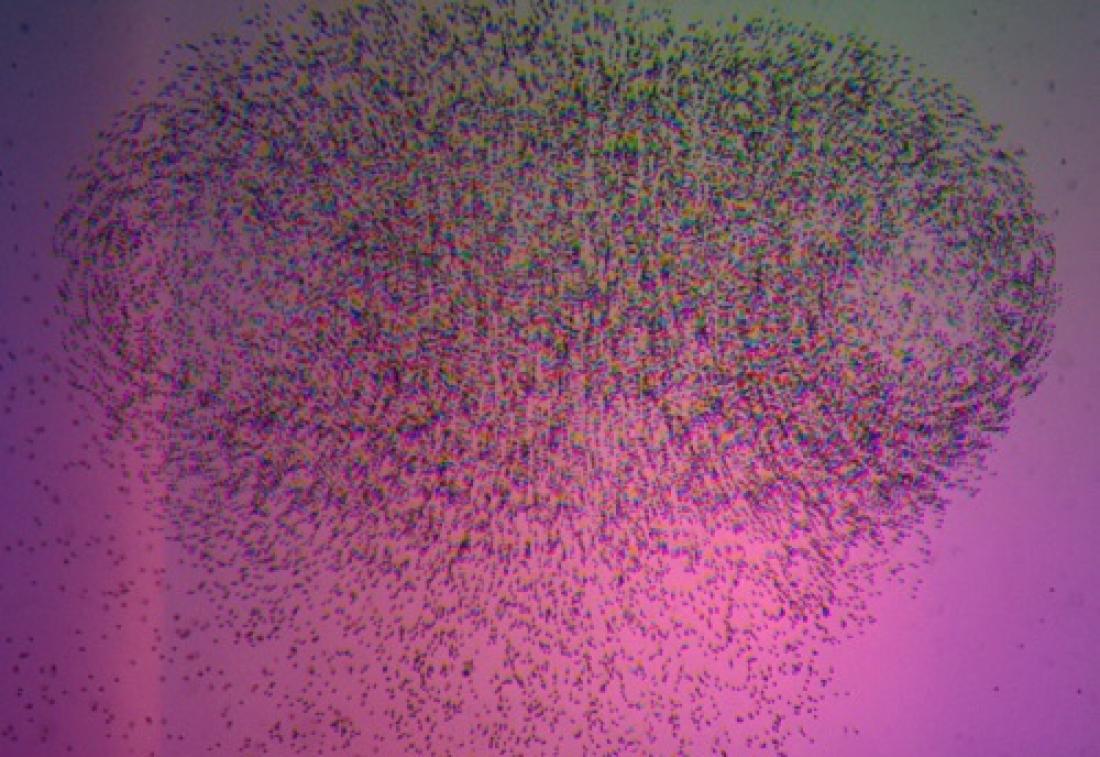An example of the three-color tracer particle image captured using a smartphone for tomographic particle image velocimetry measurements.
Using four low-cost smartphone cameras and some simple colored backlighting, KAUST researchers have dispensed with expensive research-grade camera equipment and dangerous lasers to construct a tomographic particle image velocimetry (PIV) system that is capable of quantitative flow visualization. The proof-of-concept study demonstrates the research power of everyday devices, and puts a state-of-the-art tool within easy reach of a broader group of researchers and educators.
Tomographic PIV is regarded as the holy grail of experimental fluid mechanics: it allows flow fields to be observed in three dimensions at fine spatial resolution by tracking the motion of tracer particles using an array of digital cameras. The technique involves lighting up the fluid volume with a high-intensity laser and recording the light scattered by the tracer particles using expensive, high-speed, high-sensitivity cameras. These images are then processed by simple tomographic reconstruction algorithms to reproduce the position of the particles and track their motion over time to give the 3D velocity field.
“Having access to tomographic PIV for the first time allows the calculation of full vortex structures in a turbulent flow,” says Sigurdur Thoroddsen who led the research team. “This can benefit many applications involving turbulence, such as mixing or reducing drag for flows over airfoils or Formula 1 cars and even studying swimmers and flying animals.
“But the technique is prohibitively expensive for many researchers,” continues Thoroddsen. “We believe that it should be possible to use mainstream consumer devices to produce high-quality research on various flow problems.”
The smartphone PIV system consists of four 41-megapixel smartphone cameras positioned at different angles around the flow volume—in this case a glass tank filled with moving water and polystyrene tracer particles forming a vortex ring flow. To overcome the low sensitivity of the phone cameras, the cameras were set up to photograph the shadows of the tracer particles cast by blue, green and red LED lights, imprinting in the same image all three colors (see image). The results compare well with those obtained using a commercial tomographic PIV system, with deviations in circulation flow of less than 8%.
“With the addition of optical zoom as seen on some of the latest phones, and the ability to take ‘4k’ video clips or even slow-motion video, we expect to see a significant increase in the possibilities of this approach,” says Thoroddsen. “We have already pre-ordered the latest phones to extend our work.”



